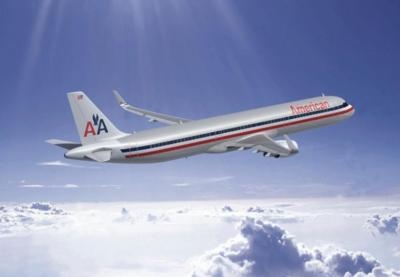Rate Falls To 0.52 Percent Per 10,000 Passengers Boarded
The U.S. Department of Transportation (DOT) has released its August 2017 Air Travel Consumer Report, compiling air carrier data for the month of June 2017, second quarter of 2017, and first half of 2017. For the first six months of this year, the 12 U.S. carriers who report involuntary denied boarding, or bumping, data posted a bumping rate of 0.52 per 10,000 passengers, the lowest January through June rate based on historical data dating back to 1995 and down from the rate of 0.62 posted during the first six months of 2016. For the second quarter of 2017, the carriers posted a bumping rate of 0.44 per 10,000 passengers, the lowest quarterly rate based on historical data dating back to 1995 and down from the rate of 0.62 posted in both the second quarter of 2016 and the first quarter of 2017.

Oversales data, unlike other air carrier data, are reported quarterly rather than monthly. The previous lowest rate for the January through June period was 0.62 in 2016. The previous lowest quarterly rate was 0.50 from July through September 2002.
The U.S. carriers reporting mishandled baggage data posted a mishandled baggage rate of 2.65 reports per 1,000 passengers in June, an improvement over June 2016’s rate of 2.82, but up from May 2017’s rate of 2.32. For the first six months of the year, the carriers posted a mishandled baggage rate of 2.54 per 1,000 passengers, an improvement over the 2.65 rate for the same period last year.
The consumer report also includes data on on-time performance, cancellations, tarmac delays, chronically delayed flights, and the causes of flight delays filed with the Department’s Bureau of Transportation Statistics (BTS) by the reporting carriers. In addition, the consumer report contains a record of aviation service complaints filed with DOT’s Aviation Consumer Protection Division by consumers regarding a range of issues including flight problems, baggage, reservation and ticketing, refunds, customer service, disability access, and discrimination. The report also includes information about the total number of animals that died, were injured, or were lost during air transport in June 2017, as filed by the air carriers with the Aviation Consumer Protection Division.
The Department has launched an airline passenger microsite to make it easy for travelers to understand their rights. The site can be viewed here. https://www.transportation.gov/airconsumer/flights-and-rights.

On-Time Performance
The reporting carriers posted an on-time arrival rate of 76.2 percent in June 2017, down from both the 78.0 percent on-time rate in June 2016 and the 79.1 percent mark in May 2017.
Cancellations
The reporting carriers canceled 1.1 percent of their scheduled domestic flights in June 2017, up from the both the 1.0 percent cancellation rate posted in June 2016 and the 0.8 percent rate in May 2017.
Tarmac Delays
In June, airlines reported six tarmac delays of more than three hours on domestic flights compared to twenty-seven such tarmac delays reported in May 2017. In June, airlines also reported two tarmac delays of more than four hours on international flights compared to no such tarmac delays reported in May 2017. All reported extended tarmac delays are investigated by the Department.
Chronically Delayed Flights
At the end of June, there were three regularly scheduled flights that were chronically delayed – more than 30 minutes late more than 50 percent of the time – for four consecutive months. There were an additional 12 regularly scheduled flights that were chronically delayed for three consecutive months and an additional 83 regularly scheduled flights that were chronically delayed for two consecutive months. A list of flights that were chronically delayed for one or more months is available from BTS.
Causes of Flight Delays
In June 2017, the carriers filing on-time performance data reported that 23.76 percent of their flights were delayed – 6.86 percent of their flights were delayed by aviation system delays, compared to 6.89 percent in May; 8.85 percent by late-arriving aircraft, compared to 7.40 percent in May; 5.96 percent by factors within the airline’s control, such as maintenance or crew problems, compared to 5.19 percent in May; 0.70 percent by extreme weather, compared to 0.37 percent in May; and 0.04 percent for security reasons, compared to 0.02 percent in May. In addition, 1.09 percent of flights were canceled and 0.26 percent were diverted.
Weather is a factor in both the extreme-weather category and the aviation-system category. This includes delays due to the re-routing of flights by DOT’s Federal Aviation Administration in consultation with the carriers involved. Weather is also a factor in delays attributed to late-arriving aircraft, although airlines do not report specific causes in that category.
BTS uses the data collected from airlines to determine the percentage of late flights delayed by weather, which includes those reported in the categories of extreme weather, late-arriving aircraft, and National Aviation System delays. In June, 33.41 percent of late flights were delayed by weather, up from 31.93 percent in June 2016 and from 28.56 percent in May 2017.
(Source: DOT news release. Image from file)
 ANN's Daily Aero-Term (04.26.24): DETRESFA (Distress Phrase)
ANN's Daily Aero-Term (04.26.24): DETRESFA (Distress Phrase) ANN's Daily Aero-Linx (04.26.24)
ANN's Daily Aero-Linx (04.26.24) Airborne 04.22.24: Rotor X Worsens, Airport Fees 4 FNB?, USMC Drone Pilot
Airborne 04.22.24: Rotor X Worsens, Airport Fees 4 FNB?, USMC Drone Pilot Airborne 04.24.24: INTEGRAL E, Elixir USA, M700 RVSM
Airborne 04.24.24: INTEGRAL E, Elixir USA, M700 RVSM Airborne-NextGen 04.23.24: UAVOS UVH 170, magni650 Engine, World eVTOL Directory
Airborne-NextGen 04.23.24: UAVOS UVH 170, magni650 Engine, World eVTOL Directory




